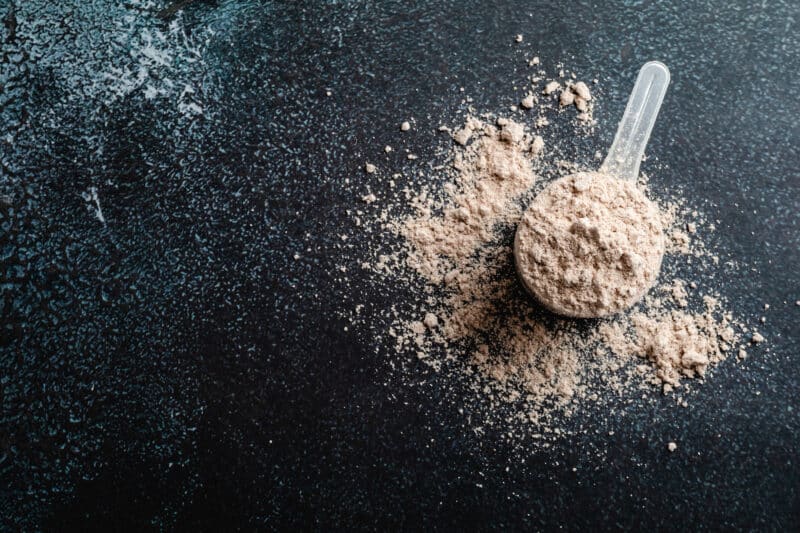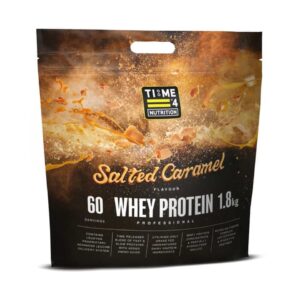WHAT IS MICELLAR CASEIN?
What Is Micellar Casein?
What is Micellar Casein? – Anticatabolic Protein
(Click on the Reference Numbers in Blue for More Info)
If you have an interest in sports such as a bodybuilding or powerlifting, or just want to develop a fit, lean, muscular physique, you’ve probably used, or at least heard of, whey protein. It is one of the most popular and biggest selling supplements on the market today, with numerous scientific studies demonstrating the host of great benefits it provides for both health and performance, such as helping to increase muscle mass and reduce body fat.
Another form of dairy protein, which is less well known but also hugely beneficial with many studies to support its use, is micellar casein protein. In this article, we are going to explain what micellar casein protein is and how it may benefit your health and performance.
What Is Micellar Casein Protein?
Firstly, you need to understand what casein protein is and what it isn’t.
While whey comprises of 20% milk protein, casein accounts for the remaining 80%. One litre of milk contains 32 grams of protein (26g casein and 6g whey). Like whey protein, casein is a complete protein which provides all of the essential amino acids the body needs for growth and repair (9). Also, like whey, there are different types of casein, the nutritional value of which is influenced by the type of processing they have undergone.
The two main forms are casein hydrolysate, which is pre-digested and rapidly absorbed, and micellar casein. Time 4 Whey Protein contains micellar casein protein. Like our whey protein, this is low temperature undenatured, allowing it to maintain all of its amino acids, bioactive compounds and growth factors in their most powerful natural state.
Don’t Confuse Micellar Casein With Caseinates
You may have come across the term ‘caseinates’. Although it also refers to a milk derived product, it is important not to confuse micellar casein with caseinates. The processing they undergo produces quite different substances. Micellar casein concentration is accomplished by the use of a process known as ultrafiltration or microfiltration. Under high pressure, but at a low temperature compared to caseinate production, milk is forced through an extremely fine filtration screen that traps the casein and most of the whey protein molecules, but without eliminating the natural minerals found in milk, such as calcium, magnesium, and others.
This a non-denaturing mechanical process, which allows the micellar casein to maintain its natural globular structure and comprises particles known collectively called as micelles.
Casein micelles are composed of four main types of proteins: αS1‐casein, αS2‐casein, β‐casein, and k‐casein, which influence various bodily functions including digestion and immunity.
These different casein proteins possess different functional properties due to their primary amino acid sequence. For example, αS1‐casein plays an important role in the capacity of milk to transport calcium phosphate and also has antioxidant properties. While k‐casein is responsible for an increased efficiency of digestion and the inhibition of gastric pathogens.
Caseinate production, on the other hand, occurs via a multi-step chemical processing which involves both acidic and alkali processes during manufacture.
The pH changes and chemical reactions taking place in caseinate production destroy the naturally occurring bioactive substrates, which contribute to various important functions in the body, and typically create a product that is less palatable and perhaps even off-putting in both taste and smell. These changes differ significantly from the production of milk casein, which helps to retain as much of the milk’s protein in its natural form as possible, including the whey, and do so with as little denaturing of the proteins as possible. Additionally, as micellar casein has not been acid treated in production, is it more effective at forming a ‘bolus’ (a small rounded mass of chewed food) in the stomach, which helps to enhance its time release qualities.
Micellar casein also retains a natural ‘milky’ flavour and is much easier to incorporate into product formulations.
That said, both of these products have their uses. While milk only has a protein concentration of approximately three percent, both micellar casein and caseinates have a very high concentration of protein in comparison. Therefore, they have found popularity as nutritional supplements in many fields, including adult nutrition, bodybuilding and sports medicine.

The Digestion Of Micellar Casein
The superiority of micellar casein becomes even more evident when we understand how it is digested. Casein in its micellar form has a unique molecular structure. When we consume micellar casein, a bolus is formed in the stomach as the micellar casein reacts with the gastric acid.
The digestive systems produce a variety of digestive enzymes, which help speed up the digestion of food. A number of these enzymes are referred to as being ‘site specific’. This means that they will only act upon specific sites of a molecule when that molecule has a specific structure.
These specific enzymes fit into molecular structures as a particular key fits a lock. Specific digestive enzymes will act upon casein micelles to produce bioactive peptides, which perform a variety of important functions in the body.
For example:
Glycomacropeptide (GMP) is produced when kappa-casein is hydrolyzed at one specific peptide bond. When the stomach detects the formation of GMP, a hormonal cascade begins. The body produces a substance known as cholecystokinin (CKK), which signals the brain of satiety and suppresses appetite. GMP has also been shown to enhance the absorption of calcium and zinc and inhibit platelet aggregation in the blood vessels, thereby helping to prevent narrowing of the arteries.
Casomorphins are peptides derived from micellar casein during digestion that have an opioid effect in the body. They have been shown to reach to the brain and produce a calming, tranquilizing effect. They have also been shown to be antihypertensive and act to slow the muscular contraction of the small intestine, thereby allowing food to linger for longer to aid maximum absorption of nutrients, and helping us to feel full for longer.
Casein-Phospho-Peptide (CPP) contain high levels of calcium and phosphorous. They are easily absorbed into the bloodstream. As calcium and phosphorous are the building blocks of the skeletal system, CPP contributes to the development and maintenance of strong healthy bones. In fact, in some parts of the world, CPP is used to protect against osteoporosis.
In addition to the bioactive peptides that are produced when micellar casein is consumed, micellar casein has also been shown to have anticatabolic (10), helping to prevent oxidative breakdown of muscle tissue during and after intense exercise.

Casein Protein Versus Whey Protein
Although casein and whey are both derived from milk and offer similar benefits, they differ in a number of ways and complement each other.
While whey contains more of the branched-chain amino acids (BCAAs) leucine, isoleucine and valine, casein contains a higher portion of the amino acids histidine, methionine and phenylalanine. It also provides two essential elements, calcium and phosphorus.
Casein and whey protein contain different bioactive compounds that benefit your health in a multitude of ways. Casein contains several bioactive peptides that have been shown to benefit the immune, cardiovascular and digestive systems. For example, casein-derived peptides have been shown to lower blood pressure and reduce the formation of blood clots. Glycomacropeptide (GMP) a peptide derived from kappa casein, exhibits antibacterial and antithrombotic activities (35).
Alpha lactalbumin (LA) demonstrates antiviral, antitumor and anti-stress properties while lysozyme is effective in treatment of periodontitis and prevention of tooth decay (35).
In contrast to whey protein’s rapid digestion, micellar casein protein is referred to as a ‘time-release’ protein because it is digested slowly, supplying your muscles with amino acids at a low level over a period of up to 8 hours after consumption to ensure optimum growth and recovery (10, 11). This also helps you to feel full longer, which is particularly useful when you are trying to get leaner, and makes it ideal for consumption before fasting situations, such as sleep. It can also help to reduce post-exercise soreness and prevent cravings during the night and extreme hunger first thing in the morning.
Consequently, athletes often consume casein before bed when it can reduce muscle breakdown as they fast overnight. In short, this means that your muscle cells are able to synthesize protein during times when your body might normally be breaking down its own muscle tissue. Consequently, this ability of micellar casein protein has led to it being referred as ‘anti-catabolic’.

What Does The Science Say About Consuming Casein Protein Before Bed?
A study by Snijders and colleagues (20) assessed the impact of casein protein supplementation before sleep on muscle mass and strength gains during a resistance training programme. The results of the study showed that those subjects consuming a casein protein supplement before bed increased type 2 muscle fibre size by 8.4cm2 compared to 4.8cm2 in the placebo group. The study also found the casein group achieved significantly greater gains in strength (20%) in comparison to the placebo group.
In light of evidence such as this, the International Institute of Sports Nutritionists now recommend a pre-sleep intake of casein protein to increase overnight muscle protein synthesis (21).
Casein Is Not Just A Bedtime Drink
It is important to note that micellar casein protein isn’t just for consumption at night; with its slow release of critical nutrients, it is ideal for consumption at breakfast, bedtime and any situation that involves short-term fasting.
For example, it is recommended that we consume high quality protein every 3-4 hours across the day to maximise muscle protein synthesis (31); however, this is often difficult due to the demands of modern living. You may have your breakfast at 6am and then be unable to consume the requisite amount of protein until 12 pm. This is a full six hours of fasting. In these situations, micellar casein protein can provide you with that gradual supply of essential amino acids and other important nutrients.

The Benefits of Micellar Casein Protein: What Does The Science Say?
It is easy to make claims about the benefits of a particular product, but does the science support them?
A number of studies have shown micellar casein protein is very effective for promoting muscle growth and strength, as it provides all of the essential amino acids needed for muscle protein synthesis (12, 13, 14).
For example, a study by Tipton and colleagues (12) examined the acute response of muscle protein balance to ingestion of two different intact proteins after resistance exercise.
Healthy volunteers were randomly assigned to one of three groups. Each group consumed one of three drinks: placebo, 20g of casein or whey proteins. Volunteers consumed the drink 1 hour after the conclusion of a leg extension exercise bout. The results of the study showed that acute ingestion of both whey protein and casein after exercise resulted in similar increases in muscle protein net balance, resulting in net muscle protein synthesis.
It has also been shown to enhance long-term muscle mass by reducing protein breakdown (10, 11). This process occurs on a daily basis when your body is low on energy and amino acids, and is accelerated during exercise or weight loss.
What Does The Science Say About Casein And Weight Loss?
In addition to increasing muscle mass, casein protein has also been shown to help reduce body fat levels (14).
For example, a study by Demling and DeSanti (14) compared the effects of a moderate hypo-caloric, high-protein diet and resistance training, using two different protein supplements, versus hypo-caloric diet alone on body compositional changes in overweight police officers. The results of the study showed that the casein protein group’s fat loss was three times greater than the placebo group.
Lean mass gains in the three groups did not change for diet alone, versus gains of 4 +/- 1.4 and 2 +/- 0.7 kg in the casein and whey groups, respectively. Mean increase in strength for chest, shoulder and legs was 59 +/- 9% for casein and 29 +/- 9% for whey. The authors concluded that this significant difference in body composition and strength is likely due to improved nitrogen retention and overall anticatabolic effects caused by the peptide components of the casein protein.
Hochstenbach-Waelen and colleagues (32) compared the effects of 2 diets with either 25% or 10% of energy from casein (25En% and 10En% casein diets), as the only protein source, on energy expenditure, substrate balance, and appetite profile. The results of the study showed that the 25En% casein diet boosts energy expenditure, protein balance, satiety, and negative fat balance, all of which are beneficial to body weight management.
The term ‘satiety’ refers to the feeling of fullness associated with eating. The subjects in the study following the 25% casein diet had 33% greater satiety compared to the lower casein diet. A common problem people experience when trying to lose weight is feeling hungry or empty, which may cause them to consume additional kcals. As casein is a ‘slow’ digesting protein, which remains in the digestive tract and delays stomach emptying, it helps you to feel full longer and so reduce hunger, making it easier to adhere to your diet plan.
Additional Benefits of Micellar Casein
In addition to enhancing muscle mass and reducing body fat, casein protein has been shown to provide a number of other potential health benefits. These include, but are not limited to, reducing blood triglyceride levels (22), reducing free radicals (23), and enhancing immune function (24).

The Benefits Of Combining Whey Protein And Casein Protein
We have seen that both whey and casein protein can provide numerous benefits, but is there additional benefit to be gained from combining them?
Firstly, it is important to remember that it is natural for us to eat a combination of whey and casein proteins, as they occur together in dairy foods, and therefore, can work together to provide a steady influx of amino acids for muscle growth and repair, but what does the science say?
Boirie and colleagues (10) tested the hypothesis that the speed of absorption of dietary amino acids by the gut varies according to the type of ingested dietary protein, which can affect post-feeding protein synthesis, breakdown, and deposition. A group of healthy adults consume a casein and whey protein supplement in a single meal. The results showed that whey protein induced a dramatic but short increase of plasma amino acids, while casein induced a moderate increase with a prolonged plateau. Whole body protein breakdown was inhibited by 34% after casein ingestion but not after whey protein ingestion. Postprandial protein synthesis was stimulated by 68% with the whey protein meal and to a lesser extent (+31%) with the casein.
The authors concluded that the speed of protein digestion and amino acid absorption from the gut has a major effect on whole body protein anabolism after a single meal. Therefore, the body’s response to slow and fast proteins has implications for both health and performance.
The bottom line is that a combination of the both whey and casein protein provides a better anabolic effect as it delivers a sustained feed of muscle building amino acids into the blood stream to ensure optimum growth and recovery.
The efficacy of a combined whey and casein supplement was further demonstrated by the results of a study by Willoughby et al., (33) A group of men participating in a strength training programme, consumed either a 20g protein supplement (14g whey and casein protein and 6g free amino acids) or a dextrose placebo (sugar).
The subjects consuming the whey and casein supplement had greater increases in total body mass, fat-free mass, thigh mass, muscle strength, serum IGF-1, IGF-1, mRNA, MHC I and IIa expression, and myofibrillar protein, all of which are indicators of protein muscle synthesis and anabolism, in comparison to those subjects consuming the dextrose placebo.
Consuming a combination of casein and whey protein has also been shown to help reduce body fat while increasing muscle. The results of a study by Kerksick et al., (34) found that male resistance trained subjects who took a protein supplement containing whey and casein protein increased lean tissue mass and decreased fat mass to a greater degree, in comparison to subjects who consumed either a carbohydrate placebo or a whey protein plus a branched-chain amino acids supplement.

The Importance Of Feed And Processing
Like whey protein, not all casein proteins are created equal; the food source the dairy cows are fed and the type of processing the casein undergoes both affect its quality and the benefits it provides. The milk used to produce both the casein and whey in Time 4 Whey Protein Professional is from grass fed herds and is undenatured.
Milk from grass-fed cows has been shown to have an enhanced nutrient profile in comparison to that from grain-fed herds, such as increased levels of Omega-3 polyunsaturated fatty acids, conjugated linoleic acid (CLA) and phytonutrients.
To learn more about the benefits of CLA, just click here.
Undenatured, whey protein is produced by the filtration of unprocessed raw milk at low temperature with the sole purpose of making whey protein supplements. This allows it to maintain all its amino acids, bioactive compounds and growth factors intact, and provides it with higher levels of the amino acid leucine. Cheaper dairy proteins are the by-product of cheese making that employs high temperature processing methods.
To learn more about the benefits of undenatured dairy protein, just click here.
READ ARTICLE: ARTICLE TO FOLLOW

In conclusion….
As we have seen, although casein and whey protein are both derived from milk and are good sources of amino acids and other nutrients needed for optimal muscle growth and recovery and general health, the benefits they provide differ, but complement each other.
Casein digests slowly, making it ideal before bedtime or for any other period of fasting. Whey, on the other hand, digests quickly, making it ideal post-exercise or immediately before. Both contain different bioactive compounds that help to boost your immune system and offer other benefits, which are dependant upon the method of processing they have undergone.
So, while casein and whey have their differences, they each play important roles in the body and provide numerous health and performance benefits. Consequently, choosing one over the other will not provide you with optimal gains. As it is natural for us to consume whey and casein together in whole dairy foods, why not consume them together in Time 4 Whey Protein Professional and enjoy the benefits of both?
Time 4 Whey Protein Professional is a specially formulated combination of our grass fed peptide protein blend comprising Native (Undenatured) Whey Protein Concentrate, Partially Hydrolysed Whey Protein Isolate, Micellar Casein, Fermented Amino Acid Blend: LeuSyn®: (Glycyl-L-leucine), L-leucine, Taurine, Lactoferrin, and DigestiZym®.

